 W
WAcca of Hexham was a Northumbrian saint and Bishop of Hexham from 709 until 732.
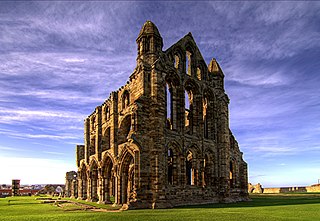 W
WSaint Ælfflæd (654–714) was the daughter of King Oswiu of Northumbria and Eanflæd. She was abbess of Whitby Abbey, an abbey of nuns that were known for their skills in medicine, from the death of her kinswoman Hilda in 680, first jointly with her mother, then alone. Ælfflæd was particularly known for her skills in surgery and her personal attention to patients, as was Hilda, who was known for her personalized medical care.
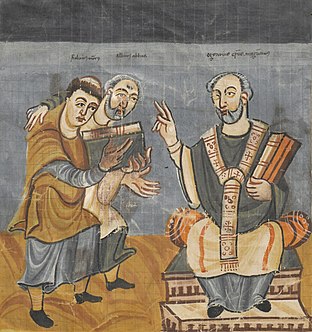 W
WAlcuin of York – also called Ealhwine, Alhwin, or Alchoin – was an English scholar, clergyman, poet, and teacher from York, Northumbria. He was born around 735 and became the student of Archbishop Ecgbert at York. At the invitation of Charlemagne, he became a leading scholar and teacher at the Carolingian court, where he remained a figure in the 780s and 790s. During this period, he perfected Carolingian minuscule, an easily read manuscript hand using a mixture of upper- and lower-case letters. Latin paleography in the eighth century leaves little room for a single origin of the script, and sources contradict his importance as no proof has been found of his direct involvement in the creation of the script. Carolingian minuscule was already in use before Alcuin arrived in Francia. Most likely he was responsible for copying and preserving the script while at the same time restoring the purity of the form.
 W
WThe Annales Almannici, which are also referred to as the Annals of St. Gall, provide one of the earliest records of Medieval Europe available. The core text of the Annales Alamannici covers the years 709 through to 799. Spread over several Swabian monasteries, the annals were continued independently in several places, in the Reichenau Abbey up to 939, in Abbey of Saint Gall up to 926. The St. Gallen version was continued from 927 to 1059 as the Annales Sangallenses maiores. They depict a limited number of events, in short prose, but their value to scholars is in their medieval representational style.
 W
WArbeo of Freising was an early medieval author and Bishop of Freising from 764.
 W
WArno, Arn or Aquila was bishop of Salzburg, and afterwards its first archbishop. He preserved his voluminous correspondence from the scholar Alcuin of York.
 W
WBede, also known as Saint Bede, the Venerable Bede, and Bede the Venerable, was an English Benedictine monk at the monastery of St. Peter and its companion monastery of St. Paul in the Kingdom of Northumbria of the Angles.
 W
WBenedict of Aniane, born Witiza and called the Second Benedict, was a Benedictine monk and monastic reformer, who left a large imprint on the religious practice of the Carolingian Empire. His feast day is February 12.
 W
WBoniface, born Winfrid in the Devon town of Crediton in Anglo-Saxon England, was a leading figure in the Anglo-Saxon mission to the Germanic parts of the Frankish Empire during the 8th century. He organised significant foundations of the church in Germany and was made archbishop of Mainz by Pope Gregory III. He was martyred in Frisia in 754, along with 52 others, and his remains were returned to Fulda, where they rest in a sarcophagus which became a site of pilgrimage. Boniface's life and death as well as his work became widely known, there being a wealth of material available—a number of vitae, especially the near-contemporary Vita Bonifatii auctore Willibaldi, legal documents, possibly some sermons, and above all his correspondence. He is venerated as a saint in the Christian church and became the patron saint of Germania, known as the "Apostle of the Germans".
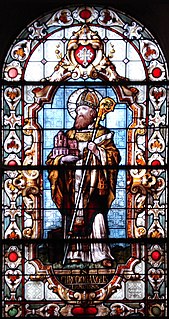 W
WSaint Chrodegang was the Frankish Bishop of Metz from 742 or 748 until his death. He served as chancellor for his kinsman, Charles Martel. Chrodegang is claimed to be a progenitor of the Frankish dynasty of the Robertians.
 W
WEadfrith of Lindisfarne, also known as Saint Eadfrith, was Bishop of Lindisfarne, probably from 698 onwards. By the twelfth century it was believed that Eadfrith succeeded Eadberht and nothing in the surviving records contradicts this belief. Lindisfarne was among the main religious sites of the kingdom of Northumbria in the early eighth century, the resting place of Saints Aidan and Cuthbert. He is venerated as a Saint in the Roman Catholic Church, and in the Eastern Orthodox Church, as also in the Anglican Communion.
 W
WEcgbert was an 8th-century cleric who established the archdiocese of York in 735. In 737, Ecgbert's brother became king of Northumbria and the two siblings worked together on ecclesiastical issues. Ecgbert was a correspondent of Bede and Boniface and the author of a legal code for his clergy. Other works have been ascribed to him, although the attribution is doubted by modern scholars.
 W
WSaint Fulrad was born in 710 into a wealthy family, and died on July 16, 784 as the Abbot of Saint-Denis He was the counselor of both Pippin and Charlemagne. Historians see Fulrad as important due to his significance in the rise of the Frankish Kingdom, and the insight he gives into early Carolingian society. He was noted to have been always on the side on Charlemagne, especially during the attack from the Saxons on Regnum Francorum, and the Royal Mandatum. Other historians have taken a closer look at Fulrad's interactions with the papacy. When Fulrad was the counselor of Pepin he was closely in contact with the papacy to gain approval for Pepin's appoint as King of the Franks. During his time under Charlemagne, he had dealings with the papacy again for different reasons. When he became Abbot of Saint-Denis, Fulrad's life became important in the lives of distinct historical figures in various ways during his period as Saint-Denis's abbot during the mid-eighth century. Saint Fulrad's Feast Day is on July 16.
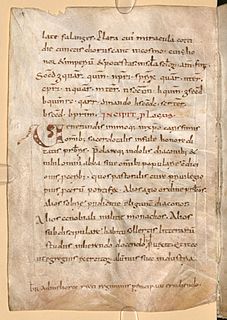 W
WHygeburg, also Hugeburc, Hugeberc, Huneberc or Huneburc, was an Anglo-Saxon nun and hagiographer at the Alemannian monastery of Heidenheim. She is "the first known Englishwoman to have written a full-length literary work" and "the only woman author of a saint's life from the Carolingian period".
 W
WJohn of Beverley was an English bishop active in the kingdom of Northumbria. He was the bishop of Hexham and then the bishop of York which was the most important religious designation in the area. He went on to found the town of Beverley by building the first structure there, a monastery. John was associated with miracles during and after his lifetime, and was canonised a saint by the Catholic Church in 1037.
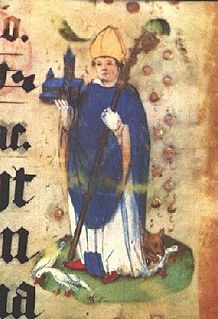 W
WSaint Ludger was a missionary among the Frisians and Saxons, founder of Werden Abbey and first Bishop of Münster in Westphalia. He has been called the "Apostle of Saxony".
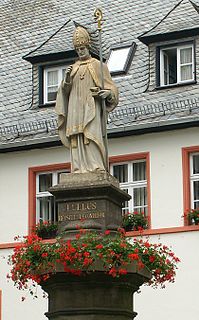 W
WSaint Lullus was the first permanent archbishop of Mainz, succeeding Saint Boniface, and first abbot of the Benedictine Hersfeld Abbey.
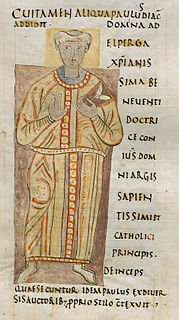 W
WPaul the Deacon, also known as Paulus Diaconus, Warnefridus, Barnefridus, or Winfridus, and sometimes suffixed Cassinensis, was a Benedictine monk, scribe, and historian of the Lombards.
 W
WSaint Paulinus II was a priest, theologian, poet, and one of the most eminent scholars of the Carolingian Renaissance. From 787 to his death, he was the Patriarch of Aquileia. He participated in a number of synods which opposed Spanish Adoptionism and promoted both reforms and the adoption of the Filioque into the Nicene Creed. In addition, Paulinus arranged for the peaceful Christianisation of the Avars and the alpine Slavs in the territory of the Aquileian patriarchate. For this, he is also known as the apostle of the Slovenes.
 W
WThe Ravenna Cosmography is a list of place-names covering the world from India to Ireland, compiled by an anonymous cleric in Ravenna around AD 700. Textual evidence indicates that the author frequently used maps as his source.
 W
WStephen of Ripon was the author of the eighth-century hagiographic text Vita Sancti Wilfrithi. Other names once traditionally attributed to him are Eddius Stephanus or Æddi Stephanus, but these names are no longer preferred or accepted by historians today; modern usage tends to favor "Stephen."
 W
WTello was the Bishop of Chur from 758/759 until his death. He was the last member of the ecclesiastical dynasty of the Victorids to wield power in Rhaetia through his control of the bishopric. His will is one of the earliest surviving records from Graubünden and is an important source for the history of Rhaetia in the eighth century.
 W
WTheodulf of Orléans was a writer, poet and the Bishop of Orléans during the reign of Charlemagne and Louis the Pious. He was a key member of the Carolingian Renaissance and an important figure during the many reforms of the church under Charlemagne, as well as almost certainly the author of the Libri Carolini, "much the fullest statement of the Western attitude to representational art that has been left to us by the Middle Ages". He is mainly remembered for this and the survival of the private oratory or chapel made for his villa at Germigny-des-Prés, with a mosaic probably from about 806. It was in Bible manuscripts produced under his influence that the Book of Baruch and the Letter of Jeremiah became part of the Western (Vulgate) Bible canon.
 W
WVergilius of Salzburg was an Irish churchman and early astronomer. Around 745, he left Ireland, intending to visit the Holy Land; but, like many of his countrymen, who seemed to have adopted this practice as a work of piety, he settled in France. Vergilius served as abbot of Aghaboe, bishop of Ossory and later, bishop of Salzburg. He was called "the Apostle of Carinthia" and "the geometer".
 W
WSaint Willibald was an 8th-century bishop of Eichstätt in Bavaria.
 W
WWillibrord was a Northumbrian missionary saint, known as the "Apostle to the Frisians" in the modern Netherlands. He became the first Bishop of Utrecht and died at Echternach, Luxembourg.